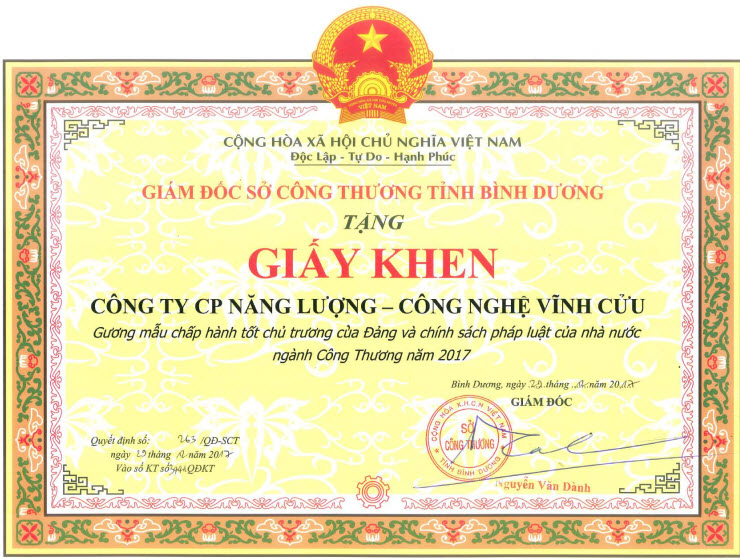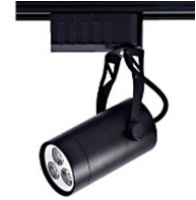The 40th anniversary of National Union in Quang Tri Province
Top News
Mr. Nguyen Quan Chinh, Vice Chairman, People's Committee of Quang Tri Province came to visit the site of LED installation.
THUrsday - 19/03/2015 17:59
- Viewed: 4916
Saving a lot of energy pumping oil
Researchers at Temple University have shown that a strong electric field applied to a section of the Keystone pipeline can smooth oil flow and yield significant pump energy savings in oil transport.
Rongjia Tao proposed in 2006 a more efficient way of improving flow rates by applying an electric field to the oil. The idea is to electrically align particles within the crude oil, which reduces viscosity and turbulence.
 The traditional custom is heating pipeline oil over several miles in order to reduce the oil’s thickness (which is also known as viscosity), but this requires a large amount of energy and counter-productively increases turbulence within the flow.
The traditional custom is heating pipeline oil over several miles in order to reduce the oil’s thickness (which is also known as viscosity), but this requires a large amount of energy and counter-productively increases turbulence within the flow.
To test the theory Tao collaborated with energy company Save The World Air, Inc. to develop an Applied Oil Technology (AOT) device that links to oil pipelines and produces an electric field along the direction of the oil flow.
Recent trials on oil pipelines in Wyoming and China verified that crude oil particles form short chains in an electric field. These chains reduce viscosity in the direction of flow to a minimum. At the same time the viscosity perpendicular to the flow increases, which helps suppress turbulence in the overall flow.
This past summer Tao and his colleagues also successfully tested the AOT device on a section of the Keystone pipeline near Wichita, Kansas.
The study paper was published in the January 2015 edition of Physical Review E and Tao will present the additional Keystone pipeline test results at the American Physical Society March Meeting 2015 in San Antonio (March 2-6).
Tao said, “People were amazed at the energy savings when we first tested this device. They didn’t initially understand the physics. A second test with an independent company was arranged and found the same thing.”
Tests on a section of the Keystone pipeline found that the same flow rate could be achieved with a 75 percent reduction of pump power from 2.8 megawatts to 0.7 megawatts, thanks to the AOT device. The device itself uses 720 watts.
Those are astonishing numbers.
Once aligned, the oil retained its low viscosity and turbulence for more than 11 hours before returning to its original viscosity. But the process is repeatable and Tao and his colleagues envision AOT stations spaced along a pipeline, significantly reducing the energy necessary to transport oil.
The inventiveness and innovation that finds its way to energy supplies is sometimes astonishing. Much of the crude oil worldwide is fairly thick stuff and moving it to where it needs to be is another expense that if saved can save consumers money.
In spite of the presidential administration’s avoidance of responsibility on major pipeline progress, research marches on. One was to wonder where else this technology might apply.
Tao has also shown that the same technique applied with a magnetic field can reduce blood viscosity by 20 to 30 percent. That study paper was published in 2011 in Physical Review E. With clinical trials, Tao says this could represent a future treatment for heart disease.
Lots of liquids get pumped. This might turn out to be quite a big but unseen thing.
Anh Tuan
Rongjia Tao proposed in 2006 a more efficient way of improving flow rates by applying an electric field to the oil. The idea is to electrically align particles within the crude oil, which reduces viscosity and turbulence.

To test the theory Tao collaborated with energy company Save The World Air, Inc. to develop an Applied Oil Technology (AOT) device that links to oil pipelines and produces an electric field along the direction of the oil flow.
Recent trials on oil pipelines in Wyoming and China verified that crude oil particles form short chains in an electric field. These chains reduce viscosity in the direction of flow to a minimum. At the same time the viscosity perpendicular to the flow increases, which helps suppress turbulence in the overall flow.
This past summer Tao and his colleagues also successfully tested the AOT device on a section of the Keystone pipeline near Wichita, Kansas.
The study paper was published in the January 2015 edition of Physical Review E and Tao will present the additional Keystone pipeline test results at the American Physical Society March Meeting 2015 in San Antonio (March 2-6).
Tao said, “People were amazed at the energy savings when we first tested this device. They didn’t initially understand the physics. A second test with an independent company was arranged and found the same thing.”
Tests on a section of the Keystone pipeline found that the same flow rate could be achieved with a 75 percent reduction of pump power from 2.8 megawatts to 0.7 megawatts, thanks to the AOT device. The device itself uses 720 watts.
Those are astonishing numbers.
Once aligned, the oil retained its low viscosity and turbulence for more than 11 hours before returning to its original viscosity. But the process is repeatable and Tao and his colleagues envision AOT stations spaced along a pipeline, significantly reducing the energy necessary to transport oil.
The inventiveness and innovation that finds its way to energy supplies is sometimes astonishing. Much of the crude oil worldwide is fairly thick stuff and moving it to where it needs to be is another expense that if saved can save consumers money.
In spite of the presidential administration’s avoidance of responsibility on major pipeline progress, research marches on. One was to wonder where else this technology might apply.
Tao has also shown that the same technique applied with a magnetic field can reduce blood viscosity by 20 to 30 percent. That study paper was published in 2011 in Physical Review E. With clinical trials, Tao says this could represent a future treatment for heart disease.
Lots of liquids get pumped. This might turn out to be quite a big but unseen thing.
Anh Tuan
Source: tietkiemnangluong.com.vn
Newer articles
- $100 Million For Solar PV Systems In Hawaii (06/04/2015)
- Earth Hour 2015 Campaign: a saving of 520,000 kWh equivalent to VND850 million (06/04/2015)
- Saving energy to cope with climate change (28/03/2015)
- Energy Label: Benefits for people, benefits for business (28/03/2015)
- Da Nang, 1,000 plus young people congregated for Earth Hour (28/03/2015)
Older articles
- New EU Energy Union (19/03/2015)
- Quang Nam Power Company strives to save 16 million kWh of electricity in 2015 (19/03/2015)
- Da Nang striving to save 1.5% commercial electricity in 2015 (15/03/2015)
- The Road towards Green and Sustainable Mining (15/03/2015)
- Water and Energy Conservation Opportunities in the Paper Industry (15/03/2015)
Devices
Consultancy
Energy Audit
ONLINE
(0909.901.045)
Energy Audit
ONLINE
(0909.901.045)
| MOU SIGNING CEREMONY ABOUT SPECIAL LED WITH COB TECHNOLOGY FOR FISHING SHIPS BETWEEN QUANG TRI PPC AND NEDO |




